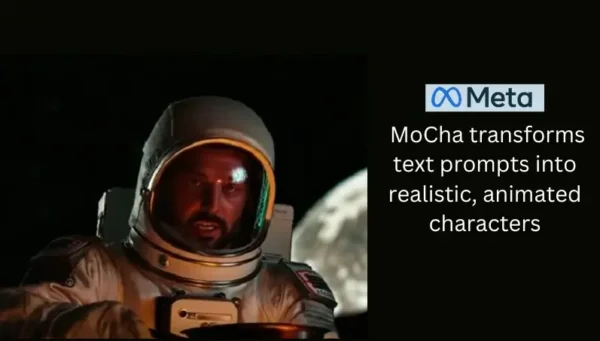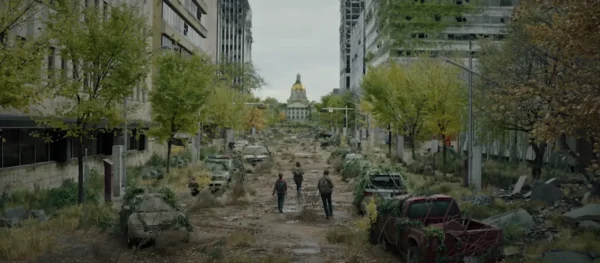
Meta’s groundbreaking MoCha AI system transforms text prompts into realistic, animated characters. Learn how this innovation is reshaping gaming, filmmaking, and the metaverse.
Meta has unveiled MoCha(Movie Character Animator), an advanced AI system capable of generating life like animated characters directly from text prompts. Developed in collaboration with researchers from the University of Waterloo, MoCha represents a significant leap forward in animation technology. This tool is set to revolutionize industries like gaming, virtual reality (VR), augmented reality (AR), and film making, by eliminating the need for motion capture suits or complex animation software.
How MoCha Works:
MoCha leverages cutting-edge AI techniques to create high-quality 3D animations based on simple text descriptions. Built on a diffusion transformer model with 30 billion parameters, it produces HD video clips at 24 frames per second. Here’s how it achieves its remarkable results:
- Text-to-Motion Conversion:
Users can input prompts like “A character jumps excitedly after scoring a goal,” and MoCha generates a corresponding 3D animation that reflects the described motion and emotion.
- Speech-Video Window Attention Mechanism:
MoCha employs a sophisticated Speech-Video Window Attention mechanism to align audio and video frames. This approach limits each frame’s access to a specific window of audio data, ensuring that lip movements are synchronized with spoken words. This method mimics human speech patterns,where lip movements are influenced by immediate sounds while broader body language follows the text’s context.
- Cross-Language Lip-Sync Accuracy:
MoCha’s design allows it to maintain voice and lip movement synchronization across languages. This is particularly important for global content, as it ensures that animations remain realistic and engaging regardless of the language used. By focusing on the rhythm and timing of speech, MoCha can adapt to different linguistic patterns, making it versatile for international applications.
- Multi-Character Interaction:
MoCha simplifies the creation of scenes with multiple characters by allowing users to define and recall characters using labels like “Character 1” or “Character 2” in the prompt and then describe each tag/character using video clips.
Key Features of MoCha:
MoCha stands out due to its unique capabilities, which include:
- Full-Body Animation: Unlike other models that focus solely on facial expressions, MoCha renders complete body movements from various camera angles.
- Synchronized Speech and Gestures: It excels at generating animations with accurate lip-syncing and expressive gestures, making interactions between characters more realistic.
- End-to-End Generation: No reference images or auxiliary inputs are required; users simply provide text prompts to create detailed animations.
- Film-Level Quality: The system produces visuals nearly indistinguishable from cinematic productions, outperforming competitors like SadTalker and AniPortrait in benchmarks.
Performance:
The performance of the Mocha was evaluated with three baseline models (Hallo3, SadTalker, AniPortrait) across five criteria: lip-sync, expression, action, text alignment, and visual quality. The human evaluation scores of MoCha outperformed its competitors.
Applications Across Industries:
MoCha’s versatility opens up new possibilities across various domains:
- Gaming: Developers can create immersive characters with dynamic movements and emotions without traditional animation tools.
- Filmmaking: Directors can generate movie-grade scenes quickly, reducing production costs and timelines.
- Metaverse Development: Virtual avatars with synchronized speech and gestures enhance user experiences in VR/AR environments.
- Education and Advertising: Interactive characters can be used for engaging content in learning modules and marketing campaigns.
Challenges and Future Potential:
While MoCha demonstrates impressive capabilities, concerns about ethical implications and potential misuse have been raised. Critics worry about the authenticity of AI-generated content and its impact on creative industries. However, Meta’s commitment to innovation suggests that MoCha will continue evolving to address these challenges.
Conclusion:
Meta’s MoCha AI system is redefining what is possible in animation by turning text into realistic animated characters. With applications ranging from gaming to filmmaking, this groundbreaking tool is set to transform creative industries. As it moves closer to public release within the next year, MoCha promises to be a game-changer for digital storytelling.






